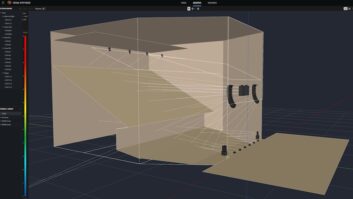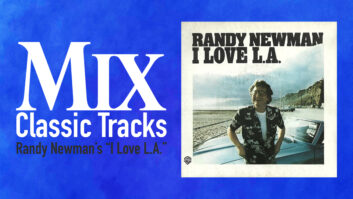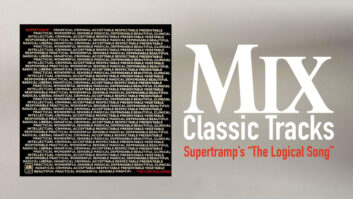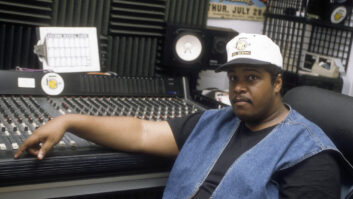Song Facts

Single: “Brazilian Love Song”
Album:Re:Generations
Date Mixed: July 2008
Producer: Michaelangelo L’Acqua
Mixer: Fabrice Dupont
Mastering Engineer: Chris Gehringer
Other Projects: Dupont has mixed tracks on albums including Brave by Jennifer Lopez, Mark Ronson’s Here Comes the Fuzz, and Santogold’s eponymous album.
Single Songwriter: B. Ferreire, A. Hoffman, D. Manning
Mixing Monitors: Focal Twin6 Be
Mixing DAW: Pro Tools|HD3 with Dangerous Music 2-Bus Select Plug-ins: Sonnox Oxford Reverb, EQ, compressor; SoundToys EchoBoy and FilterFreak; Steve Massey Tape-Head and CT4; Massenburg Design Works EQ; iZotope Trash; Digidesign Reel Tape Saturation Engineer’s Diary:
Forty-four years after Nat King Cole’s untimely passing, Re:Generations pairs the legendary vocalist/pianist with a diverse group of contemporary artists including the Roots, Nas, and the brothers Damian “Junior Gong” and Stephen Marley, and producers including will.i.am, Cee- Lo Green, and Just Blaze.
“Brazilian Love Song,” mixed by Fabrice Dupont at his Flux Studios in New York’s East Village, features Cole’s original, unimaginably silky vocal accompanied by a lush arrangement featuring guitars, keys, strings, horns, and percussion. Also featured on “Brazilian Love Song” is Bebel Gilberto, who was born a year after Cole’s death in 1965.
This updated reading of “Brazilian Love Song,” says Dupont, was a staggering 107-track session. “A lot of it is real strings and horns,” he explains, “and a lot of background vocals.
Fabrice Dupont “The challenge,” says Dupont, “was to marry the vintage recording of Nat King Cole’s voice and the modern recording.” Cole’s vocal, he marvels, “was unbelievably well recorded. That vocal was perfect. I didn’t need to compress it.

“On the chorus, I have a [Sonnox Oxford] SuprEsser, which is acting just in the mids. Solo, [the vocal] sounded great, but in the track, it was a little too rich, but only on certain notes. I used the SuprEsser to tuck that in, just when it was a problem. I used an Oxford EQ also, high passing at 50 Hz, and then I had 2 dBs [boost] at 11 kHz, and 1 dB [boost] at 7 kHz.” Dupont also made light use of a Lexicon PCM 70.
On Gilberto’s vocal, “I had the SuprEsser, which is my de-esser, and an Oxford EQ with the high pass at 100 Hz, I had [cut] 3.5 dBs at 244 Hz, and a 3 dB shelf at 11 kHz. In the analog domain, I inserted a Chandler TG1 compressor, and then a Mercury ‘Pultec’ EQ-H1.”
A second EQ-H1 was applied to the bass: “Two dBs at 50 Hz,” says Dupont. “I had a Manley Enhanced Pultec EQP-1A on the bass drum, 5 dBs at 30 Hz, 7 dBs at 10 k.”
Dupont applied Digidesign’s Reel Tape Saturation to strings, horns, and acoustic guitar. “That was incredibly useful — very gentle, very soft. I used Reel Tape on the acoustic guitars so they sounded more ‘magical’ and less real. I used iZotope Trash to make the Rhodes sound like it was amped, as opposed to being direct. On the 2-Bus, I had the GML 2030 mastering compressor, basically doing 1.5 to 2 dBs of reduction, and a Manley Stereo Pultec with 2 dBs at 90 Hz and 2 dBs at 10 k.”
Christopher Walsh is the recording editor for Pro Sound News and the associate editor of Pro Audio Review.







